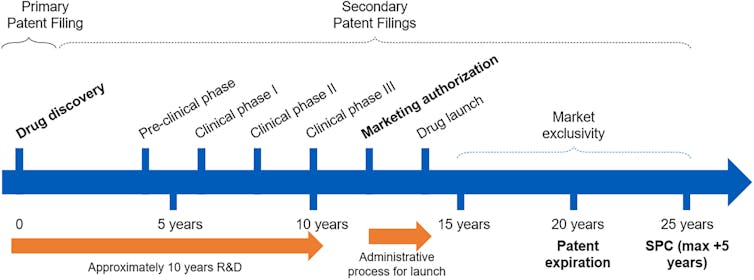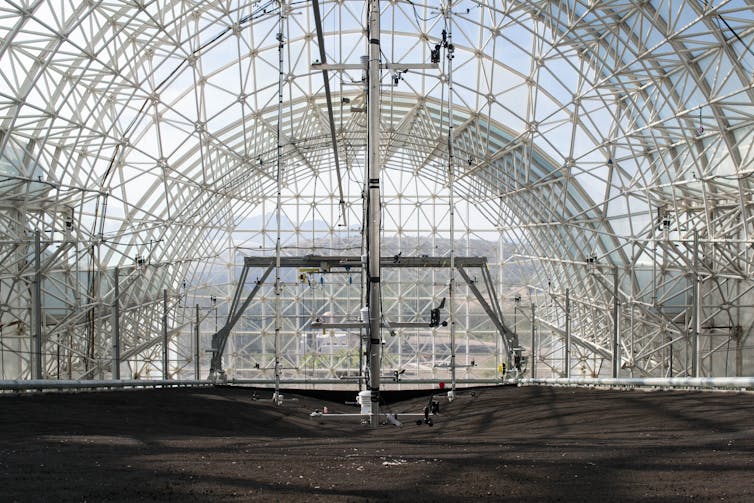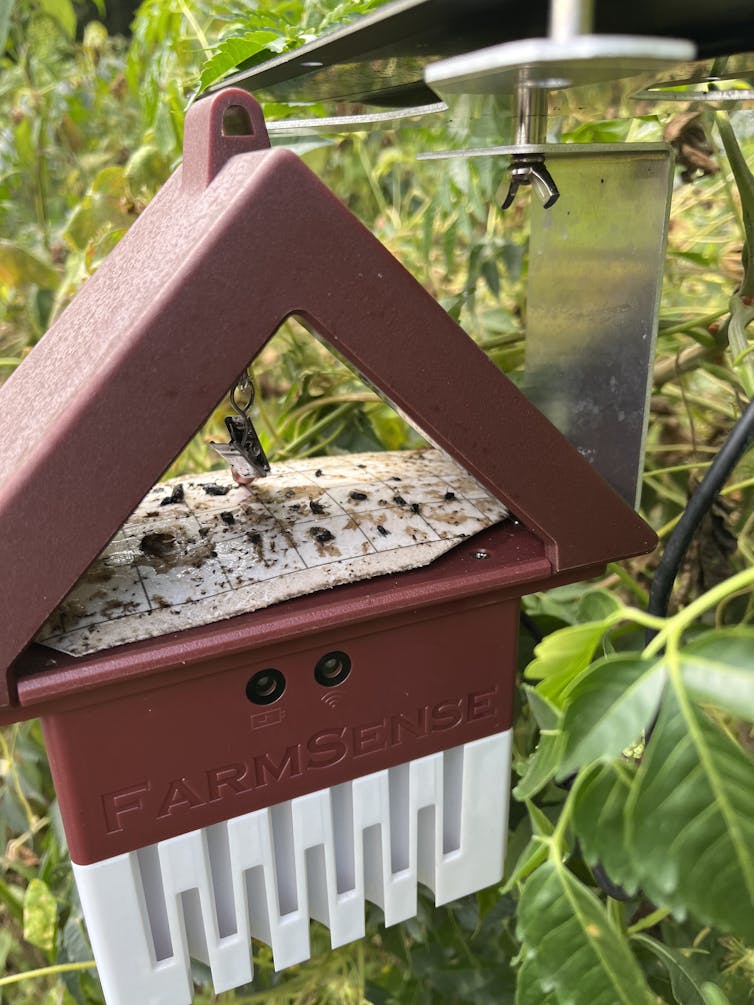Source: The Conversation – USA (2) – By Tammi Walker, Associate Professor of Law and Psychology, University of Arizona

Most Americans assume that schools are legally required to protect students from sexual harassment and assault under Title IX – the federal law enacted in 1972 that bans sexual discrimination in education.
I am a law professor and researcher who has spent more than a decade examining the disconnect between what Title IX promises on paper and what students expect it to deliver in practice. What’s happening now isn’t just another policy shift – it’s a dismantling of protections many assume still exist.
Title IX’s 37 words
The main text of Title IX is just 37 words and reads: “No person in the United States shall, on the basis of sex, be excluded from participation in, be denied the benefits of, or be subjected to discrimination under any education program or activity receiving Federal financial assistance.”
This legal text doesn’t define sex or discrimination, or explain what kinds of behavior the act covers. For decades, the Department of Education filled in those gaps by writing detailed rules, providing guidance to schools and investigating when schools failed to comply.
In 2020, the Trump administration adopted much narrower rules. Colleges and universities have to act only when top officials – such as deans or Title IX coordinators – receive a report, and even then, their responses only have to avoid being “clearly unreasonable.”
In 2024, the Biden administration tried to widen those protections by requiring schools to step in whenever employees other than doctors and therapists learned of possible harassment, and to do so promptly and effectively. But in January 2025, a federal court blocked those rules before they could take effect.
Today those less protective 2020 rules remain in place, and the agency responsible for enforcing them is being dismantled.
In March 2025, President Donald Trump ordered the Department of Education to close. Legally, an executive order cannot abolish the department outright. That would require an act of Congress.
But the order has still reshaped the agency in practice by cutting staff and shuttering offices. The Office for Civil Rights, which handles Title IX and other discrimination complaints in schools, was especially hard hit. About 260 employees were laid off, and seven of its 12 regional offices were closed, even though more than 6,000 investigations were unresolved as of January.
A federal judge has since ordered those employees to be reinstated, with staff scheduled to return in phases through November 2025. It is not clear how these and other changes are going to affect how the office functions.
A system under strain
Beyond the headlines about layoffs, the deeper question is what happens when students turn to Title IX for protection.
The Heritage Foundation’s long-term vision provides a clue: Project 2025 proposes to move the Office of Civil Rights into the Department of Justice and limit its role to litigation of intentional discrimination cases.
While Trump distanced himself from Project 2025 on the campaign trail, his Cabinet includes authors of this policy blueprint. And in less than a year, the administration has moved forward with nearly half of Project 2025’s goals, including over 40% of the policies aimed at the Department of Education.
If the Department of Education can no longer resolve discrimination complaints within the agency, students will be left to pursue their claims directly in federal court. But the numbers show why that path cannot absorb the caseload.
In 2024, the Department of Education’s Office for Civil Rights received 22,687 discrimination complaints, including nearly 12,000 related to Title IX. By comparison, federal courts in 2024 nationwide heard fewer than 1,000 education-related civil rights cases.
Federal courts are understaffed, and even if federal judges had the capacity to absorb 20 times more cases, most students simply cannot afford that path. Lawsuits demand lawyers, months of preparation and often years before any resolution.
The Office for Civil Rights offers something fundamentally different from going to court. It provides low-cost investigations, mediation that could resolve cases in weeks instead of years. Its settlements address not just individual harm but institutional failures.
Some cases drag on, but students do not need lawyers, and the OCR often secures broader reforms through negotiated settlements – from campuswide training programs to complete overhauls of complaint procedures.
The office also published policy guidance and answered more than 11,000 public inquiries in 2024, providing clarity for schools and students alike. These tools didn’t eliminate the backlog, but they showed that the OCR could deliver meaningful results without the cost and delay of court.
But this system is exactly what’s at risk if Project 2025’s vision becomes reality. If the OCR loses its authority to resolve complaints, students will lose the only clear path to quick, affordable results and reliable information.
What this means for students
For schools and their students, that shift away from federal agencies would be dramatic. It would mean no more negotiated agreements, no more policy guidance, and no administrative investigations into systemic issues. Courts would decide what Title IX means, forcing students to file expensive lawsuits that drag on for years and require much stronger evidence of discrimination than the Office of Civil Rights ever demanded.
The administration has offered an alternative: “return our students to the states,” as President Donald Trump put it on March 20, 2025, when he signed the executive order outlining his plan to close the Department of Education.
But states cannot fill the enforcement gap left by eliminating the Office for Civil Rights’ role in resolving complaints and guiding schools. The OCR had the infrastructure to investigate cases, mediate disputes and issue clear policy guidance – capacities that most states simply do not have.
State laws addressing sexual discrimination in education vary dramatically – some provide strong protections, while others offer only limited coverage or lack enforcement mechanisms altogether. Kansas, for example, has antidiscrimination laws that do not explicitly cover education, leaving it unclear whether any state agency can investigate student complaints.
And in half the country, LGBTQ+ students still lack explicit statutory protection. In practice, that means a student’s rights depend less on Title IX itself than on where they happen to go to school.
The problems run deeper than just inadequate alternatives. Even under the current system, protections are already narrow: Schools must act only if complaints reach officials with the power to make institutional changes. A report to a trusted coach, professor or resident assistant may lead nowhere. When schools do respond, the standard is remarkably low – acknowledging a complaint or opening a limited investigation often satisfies legal requirements.
These narrow protections are becoming even less reliable as transparency erodes. The Department of Education stopped updating its public list of investigations in January 2025 and only resumed in June, after months of silence. As of August 2025, just 10 resolutions involving sexual discrimination at colleges had been posted – and half predated Trump’s second inauguration. Without accurate information, students have little insight into whether schools are being held accountable at all.

Yta23/iStock via Getty Images
The narrowing scope of federal protection
Title IX was written to ensure equal educational opportunity regardless of sex. But weak regulations, enforcement delays and shrinking federal oversight are steadily eroding that promise.
For students, the reality is stark: telling the wrong person about a complaint may trigger no response; minimal efforts by schools often satisfy legal requirements; and the federal agency once charged with oversight is being sidelined. If a litigation-only model takes hold, most students will have no realistic path to relief unless they can hire a lawyer and withstand years of court proceedings.
As I further explain in a new law review article – No Department, No Enforcement – Title IX remains law, but without meaningful enforcement it risks becoming a guarantee in name only. For students, that means rights promised but rarely delivered.
![]()
Tammi Walker previously received funding from the National Science Foundation.
– ref. Title IX’s effectiveness in addressing campus sexual assault is at risk − a law professor explains why – https://theconversation.com/title-ixs-effectiveness-in-addressing-campus-sexual-assault-is-at-risk-a-law-professor-explains-why-258125
















